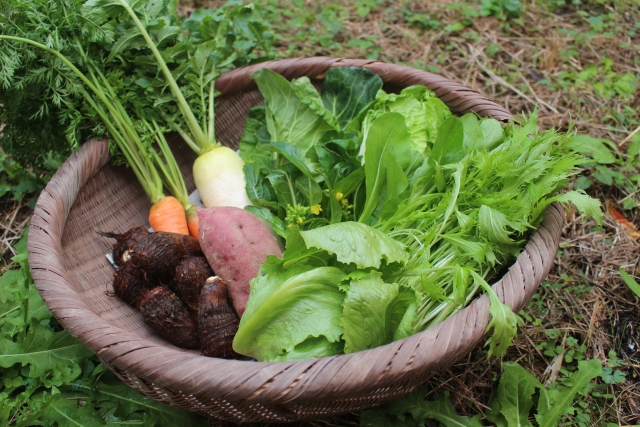Have you ever struggled to find a place to eat while traveling or dining out, thinking, “I want to avoid animal-based ingredients, but I don’t know where to go”? In Japan, where dishes often include dashi made from bonito flakes or meat extracts, dining out can feel particularly challenging for vegetarians.
However, vegetarian- and vegan-friendly restaurants have been growing in number recently. With the help of social media and specialized apps, your options can expand significantly. This article explores the current state of vegetarian restaurants in Japan, tips for dining out, and ways to enjoy a vegetarian lifestyle more fully.
Before giving up and thinking, “It’s too difficult to be vegetarian in Japan,” take a moment to read this article. You might just discover new possibilities!

Unpacking the Reality of Being Vegetarian in Japan
Is the Vegetarian Population Small?
In Japan, vegetarians are a minority compared to global standards. This can be attributed to cultural and traditional dietary habits. While Japanese cuisine is often said to be vegetable-heavy, many dishes include animal-based seasonings or broth, such as bonito dashi in miso soup or chicken stock in simmered dishes.
Furthermore, vegetarianism is not as commonly recognized here as it is in Western countries, where religious beliefs or health-conscious motivations often drive dietary choices. As a result, many restaurants in Japan are unaware of the concept of vegetarianism, leading to misunderstandings when it comes to ingredients.
That said, there has been a gradual increase in the number of people adopting plant-based diets, driven by health trends and growing awareness of environmental issues. In response, some restaurants have started offering vegetarian options, even if they’re still few and far between.
Challenges and Progress in the Dining Industry
Japan’s dining industry is still catching up when it comes to catering to vegetarians. Many establishments lack specific vegetarian menus, and even when they do, the choices can be quite limited. Staff members often misunderstand what “vegetarian” means, which might result in dishes labeled as vegetarian containing meat-based ingredients.
Nonetheless, the past few years have seen positive developments. In major cities like Tokyo and Osaka, vegetarian and vegan specialty cafes and restaurants have become more common. These venues are often spotlighted on social media and are beginning to influence other establishments. Moreover, the increased availability of imported plant-based ingredients has sped up the incorporation of global vegetarian trends into Japanese dining.

The Current State of Vegetarian-Friendly Restaurants
Differences Between Major Cities and Rural Areas
When searching for vegetarian restaurants in Japan, there’s a stark contrast between metropolitan areas and rural regions. Cities like Tokyo, Osaka, and Kyoto have several dedicated vegetarian and vegan cafes and restaurants that can be easily located via apps like Google Maps or specialized platforms. Tourist hotspots often cater to international visitors, offering English menus and clear ingredient information.
In rural areas, however, vegetarian options are much harder to come by. It’s rare to find dedicated vegetarian menus, and travelers may need to rely on advanced research or self-catering to ensure their dietary needs are met.
Vegetarian-Friendly Options
While fully vegetarian restaurants are limited, many general eateries are becoming more accommodating. For instance, Japanese chain restaurants and family dining establishments have started introducing plant-based dishes, such as salads, tofu-based meals, or udon and soba noodles, which can often be modified to fit vegetarian requirements. However, it’s still important to double-check with the staff about the inclusion of animal-based ingredients.
In addition, some restaurants now offer innovative dishes using plant-based meat substitutes, such as vegan burgers and curries. Fast-food chains in Japan have also begun experimenting with vegan options, providing more convenient choices for vegetarians on the go.

Comparing Japan to Other Countries
The Gap Between Japan and the West
In Western countries, vegetarian and vegan cultures are well-established, with plenty of options readily available in restaurants and supermarkets. In contrast, Japan’s limited availability of vegetarian-friendly options can make dining out a daunting task for international visitors.
That said, this gap presents opportunities for unique adaptations. Japan’s traditional foods and ingredients, such as shojin ryori (Buddhist temple cuisine) and plant-based fermented products, have the potential to inspire new vegetarian dishes.
Japan’s Unique Approach and Potential
As Japan continues to adapt to vegetarian needs, its culinary industry is beginning to embrace uniquely Japanese solutions. For example, kombu (kelp) and shiitake mushrooms are increasingly used as alternatives to animal-based broth. Traditional Japanese dishes are also being reimagined to cater to vegetarians while preserving their authentic flavors.
Moreover, Japan’s high-quality vegetables and fruits have been well-received by international visitors, providing a strong foundation for developing a vegetarian food culture. By combining these elements, Japan could create its own distinctive approach to vegetarian dining.

Tips for Enjoying a Vegetarian Lifestyle in Japan
Tools for Finding Vegetarian Restaurants
Finding vegetarian-friendly restaurants in Japan is made easier with the help of apps and websites. “HappyCow,” for instance, is a popular app that allows users to locate vegetarian and vegan restaurants worldwide, complete with reviews. Google Maps reviews can also help you discover hidden gems recommended by locals.
When communicating with restaurant staff, it’s often more effective to ask specific questions, such as “Does this dish contain animal-based ingredients?” rather than simply saying “I’m vegetarian,” as the term may not be widely understood.
Enjoying Vegetarian Meals at Home
In Japan, it’s easy to prepare vegetarian meals at home using ingredients like tofu, natto, kombu, and locally grown vegetables. These ingredients are widely available in supermarkets and can be used to create diverse and satisfying dishes.
Additionally, frozen or prepackaged vegetarian options are becoming more common, making it easier to maintain a plant-based diet even with a busy schedule. Thanks to Japan’s bento culture, preparing your own meals to take with you can also be a practical way to enjoy worry-free dining outside.

Conclusion
While the number of vegetarian-friendly restaurants in Japan is still limited, the growing demand has spurred significant progress, especially in metropolitan areas. With a little research and creativity, it’s possible to enjoy a fulfilling vegetarian lifestyle in Japan. Why not embrace the unique flavors and traditions of Japanese cuisine while navigating your vegetarian journey?


